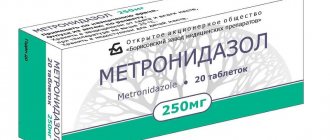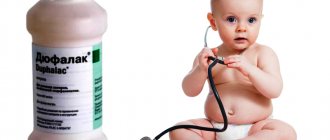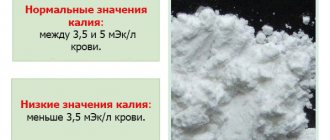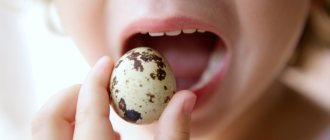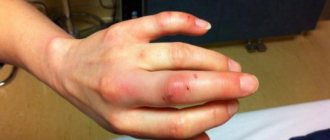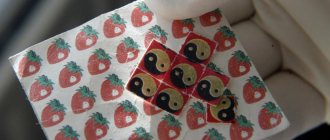There are more than 90 species of snakes in Russia. Poisonous snakes living in Russia include:
- viper (common, steppe, Caucasian, big-nosed);
- viper;
- Cottonmouth
The viper and copperhead are found almost throughout the country. The viper is the closest relative of the viper family, but larger (up to 1.5 meters in length), lives in mountain-steppe and semi-desert regions.
The common snake and the water snake, all varieties of snakes, as well as the common copperhead are harmless to people. Their bite in rare cases is accompanied only by an allergic reaction.
To avoid the consequences of allergies, take any allergy medication: Suprastin, Tavegil and others.
Non-venomous snakes of Russia
The snake does not attack first; all its throws, hisses and attempts to bite are self-defense. To avoid snake aggression and protect yourself from a bite, be careful: do not disturb the snake and it will not touch you.
Favorite places for snakes are anything that will serve as a shelter:
- high grass,
- overgrown lakes,
- swamps,
- ruins made of stones,
- abandoned quarries and buildings,
- stumps, roots and tree trunks,
- a stack of hay,
It is better not to climb into such places with bare hands and carefully watch your step so as not to accidentally step on a snake.
Poisonous snakes of Russia
External differences between poisonous and non-venomous snakes
Poisonous snakes differ in body type, color, pupil shape, and bite shape.
The body of the common viper is thick and short; grey, black or brown. A distinctive feature in the color of the viper is the “zigzag” on the back (with a black color, the “zigzag” may not be visible).
The non-poisonous and harmless common snake, which is often confused with a viper, has a long and thin body of gray or black color with yellow or red spots on the head. Thanks to such bright “ears” it is easy to distinguish it from a viper.
All venomous snakes have vertical pupils (“cat’s eyes”), while non-venomous snakes have round pupils.
It is likely that when meeting a snake, you can forget about all the differences out of fear. Therefore, if you were not careful and the snake bit you, try not to panic!
The bite of a poisonous snake is different from the bite of a non-venomous snake.
Why does the snake attack
Like all cold-blooded snakes, snakes do not attack themselves, with the exception of a few African species. As a rule, they try to avoid conflict and hide. The most common species in our country is the forest and marsh viper, and the copperhead viper is also periodically found in southern latitudes. This is a type of rattlesnake.
The snake bites only in self-defense, and never attacks first.
The most dangerous period for meeting a snake is spring . The reptiles steam and become quite aggressive. Therefore, there is no need to chase them or try to push them away with a stick. This is fraught with consequences. Stop and let her go quietly. Remember: snakes react to sudden movements.
First aid for a snake bite
If you are bitten by a non-venomous snake, treat the wound with any antiseptic. If necessary, cover with a plaster or bandage.
To myself
If you are bitten by a poisonous snake, do not panic. Remember: the more you move, the faster your blood circulation, which carries the poison throughout the body.
What to do if bitten by a snake (viper, viper, copperhead):
- Calm down and don't move suddenly. The affected limb should be at rest. For example, if you are bitten in the arm, secure it to the body - this will slow down the spread of poison throughout the body.
- Squeeze the venom out of the wound immediately after the bite, within 3-5 minutes. You can also suck out the poison immediately after the bite and for no more than 5-7 minutes. Consider the condition of your oral cavity. If you have caries or bleeding gums, it is not safe to suck out the poison! Otherwise, it will enter the body through the affected area into the oral cavity. You can cut the wound longitudinally through the bite, but not in the areas of the veins and arteries, so that the poison flows out along with the blood. The cut should be at least 1 cm deep, as this is the minimum length for the teeth of venomous snakes. Otherwise, the method is ineffective.
- Disinfect the wound with an antiseptic: medical alcohol, brilliant green, hydrogen peroxide, etc. If possible, apply a sterile dressing.
- Calmly, without unnecessary movements, get to your home, pharmacy, or hospital. Be sure to take any allergy medication. The dose must be strictly according to the instructions!
- Drink plenty of water. Water removes poison from the body.
- Lie down more.
Providing proper first aid for a snake bite makes it possible to avoid complications for the body. An adult and healthy person returns to normal on the second day after poisoning.
To an outsider
- Calm the victim and place him horizontally. Remember: when you move, blood circulation spreads poison faster in the body.
- Rest the affected limb. If the bite was in the arm, then secure it to the body, if in the leg, lay it on a board and tie it.
- Disinfect the wound and apply a sterile dressing.
- Take the victim to a doctor as soon as possible.
- Give as much fluid as possible.
A stranger is not always able to squeeze out or suck out the poison, much less cut the wound. The safest way to provide first aid for a snake bite is to take the victim to the hospital.
Recipes from traditional healers
After administering the antidote and neutralizing the snake venom, treatment at home is continued as for severe poisoning.
- Strong tea . Drinking plenty of fluids helps remove toxins from the body. Strong black tea is drunk with sugar and milk several times a day.
- Red clover . Clover juice can be purchased at a pharmacy. Take 50-70 ml three times a day until the symptoms of poisoning disappear.
- Liquorice root . Brew 2 tbsp. l. pharmaceutical collection 500 ml of boiling water, boil over low heat for 10 minutes, leave until cool and strain. Take 100 ml three times a day for 3-4 days.
- Dill decoction . Brew dill in a glass of boiling water. Any type of plant is suitable - ground seeds (in the amount of 0.5 tsp), fresh or dry stems (20 g), greens (from half a bunch). Infuse dill water for about half an hour, strain, mix with 1 tbsp. l. bee honey and drink.
- Chicory officinalis flowers . Brew 1 tbsp. l. chicory color with a glass of boiling water, leave overnight, divide into three equal portions and drink throughout the day.
- Red Ribes . Leave filtered water on any silver item for 12 hours. Squeeze ½ cup from red currants. juice, dilute with “silver water” and drink instead of tea.
- Potato juice. Prepare “silver water”, squeeze the juice from a fresh potato tuber and prepare a drink similar to red currant juice.
- A mixture of medicinal herbs . Take chamomile flowers, juniper berries, peppermint, St. John's wort, and centauria herb in equal parts. Mix, select 4 tbsp. l. herbal mixture and brew with a liter of boiling water. Boil for another 10 minutes over low heat and leave until the broth has cooled. Then strain and take 200-250 ml three times a day. A fresh decoction is prepared every day.
What not to do if you are bitten by a snake
If you are bitten by a snake, it is strictly forbidden to:
- Drinking alcohol . By dilating blood vessels, alcohol will instantly spread the poison throughout the body.
- Cauterize the wound . Causes burns and severe shock. Snake venom does not contain chemical elements that decompose when heated, so cauterization will not help, but will aggravate the victim’s condition.
- Apply a tourniquet . Due to poor circulation, soft tissue necrosis (death of a skin area) can occur. Severe cases lead to limb amputation.
- Panic . Does not allow a person to soberly assess the situation.
Prohibited actions
Dangerous method
There is an instruction that contains basic rules prohibiting certain actions after snake attacks:
- drinking alcohol;
- active behavior, increased workload;
- instead of a bandage, use a tourniquet to block the artery;
- cauterize the bitten area with an alcohol solution;
- make incisions near the wound, on swollen tissues;
- apply cold compresses to the entire surface of the leg;
- make warm lotions.
Why are poisonous snake bites dangerous?
According to WHO (World Health Organization) statistics, every year in the world there are 500-700 thousand people bitten by poisonous snakes. The number of deaths from poisoning is 32-40 thousand people (6.2-8% of the number of those bitten). Most deaths are in Asia, Africa and South America (80% of cases). In Europe, 40 to 50 people die every year from snake venom.
The mortality rate from the venom of the common viper is no more than 2% of the total number of victims. The indicator may decrease if victims are given proper assistance when bitten by a viper.
The severity of snake venom poisoning depends on:
- Varieties of poisonous snake - each species has its own poison.
- the amount of venom injected by the snake: the larger the snake, the more serious the damage.
- localization of the bite - the most dangerous are bites to the head.
- state of health, as well as the age of the person.
Severe snake venom poisoning is accompanied by:
- multiple hemorrhages on the victim’s body;
- pain in the lymph nodes, their swelling;
- the formation of blood clots in the veins.
Dangerous complications after poisoning:
- soft tissue necrosis;
- development of gangrene of the affected limb;
- failure of internal organs: liver, lungs, etc.
Remember that timely assistance in case of a snake bite helps to avoid serious consequences for the health of the victim.
Antidote for bite, antidotes
All snakebite antivenoms must be administered in a medical facility. It is important to correctly determine the type of snake, since antidotes have a highly specialized focus, for example, monovalent - Antigyurza, Anticobra. There are serums with a wide spectrum of neutralizing action. The serum is administered once, during the day, after which its effect becomes ineffective. In all cases, anti-tetanus serum is administered
Antidotes are obtained from the blood of a horse or cow, which is injected with poison and left for 0.5 years until the blood completely adapts to the poison. The mortality rate from snake bites in Russia is 1%, and, in many cases, not from the action of the poison, but from an allergic reaction to a foreign protein. There may also be an allergic reaction to the injected serum.
If there is no serum, you can give the bitten person:
- antihistamines - tavegil, diphenhydramine, suprastin. Dose: one or two tablets.
- aspirin or any antipyretic. one or two tablets.
- give an injection of novocaine on three sides - 0.5%.
- give any painkiller.
- when blood pressure drops - Heptamil, Norexodrine, Dopamine.
- take broad-spectrum antibiotics.
What to do when there is a strong local reaction
Or there are clear systemic effects (confusion, low blood pressure (systolic blood pressure <90 mmHg), high heart rate, high respiratory rate).
Patients with shock and severe symptoms are admitted to the intensive care unit.
To treat snake bites, use:
- Cortisone (100-200 mg intravenously).
- Antihistamines are given (Tavegil 1 mg IV x 2). Scientific evidence for the effectiveness of this treatment is weak.
- Serum treatment, please see instructions below.
- Immobilization of the body with the bite area, preferably in a high position. Suspend your arm high in a sling from a bed or special equipment.
- Medicines for pain relief.
- For allergic, anaphylactic reactions and bronchospasm, give epinephrine (1 mg/ml, 0.3-0.5 ml intramuscularly into the thigh muscles).
- For bronchospasm, treatment is provided with beta-agonists in inhaled forms, for example, salbutamol or terbutaline (Ventolin / Bricanyl).
- When there is anaphylactic shock, adrenaline administered intravenously, 0.1-0.5 mg (0.1 mg/ml), will help.
- An adequate fluid replacement such as Ringeracetat, hydroxyethyl starch or Macrodex should be provided. Provide replacement of the volume of lost fluid with a balanced electrolyte and colloids, preferably in the form of dextran. Do not give large amounts of dextran as this may affect blood clotting.
- Thromboprophylaxis should be given, for example, with low dose Dalteparin sodium (Fragmin) (2500-5000 units subcutaneously) or enoxaparin sodium (Lovenox) 40 mg subcutaneously, regardless of weight.
- Inotropic support and other treatments for shock are based on indications for cardiovascular failure, such as norepinephrine infusion.
- Oxygen may be required on a leash or via nasal prongs.
- Check Hb, cell counts, platelets, CRP, myoglobin, PTK/PTT, FDP, S-haptoglobin, LD.
Find out more 25 Most Poisonous and Dangerous Snakes in the World
Viper antidote
Although a pit viper's bite is not fatal, it can have far-reaching consequences and may affect the functioning of the kidneys and liver. The reaction develops 15 minutes after the bite. 3 days after help is provided, the swelling subsides and health improves. The serum is an antidote for viper bites, produced in special biofactories, based on horse serum. It contains antibodies that neutralize the poison. It is a clear liquid in ampoules.
There are a few things to consider.
- This antidote is intended only against the effects of a viper bite. It should not be administered against the venom of other snakes. If serum against viper venom is not available, symptomatic treatment should be used.
- The injected serum, due to a foreign protein, can cause anaphylactic shock, so it should be used in small doses under the supervision of a doctor. Incorrect administration has a negative impact on the condition of the bitten person.
The drug is administered subcutaneously, dose - 0.1 ml. Next, you need to monitor the patient’s condition. If there is no reaction to the antidote (no redness, spots at the injection site), after 20 minutes the next dose is administered - 0.25 ml. The remaining portion should be administered after 15 minutes. The exact dose is determined by the doctor. It is very important to store the whey correctly, in the refrigerator, at a temperature of +2 - +8 degrees. If stored improperly, the whey may deteriorate and sediment may appear. This serum cannot be used.
The viper cannot jump high, since the muscles are not so well developed, therefore, the bite threatens only in the lower part of the leg.
